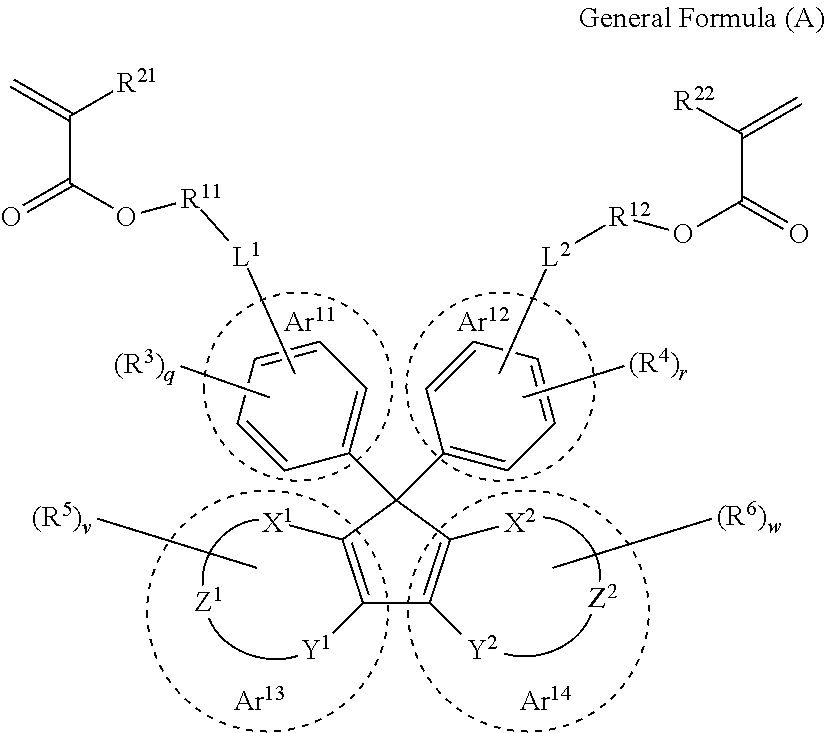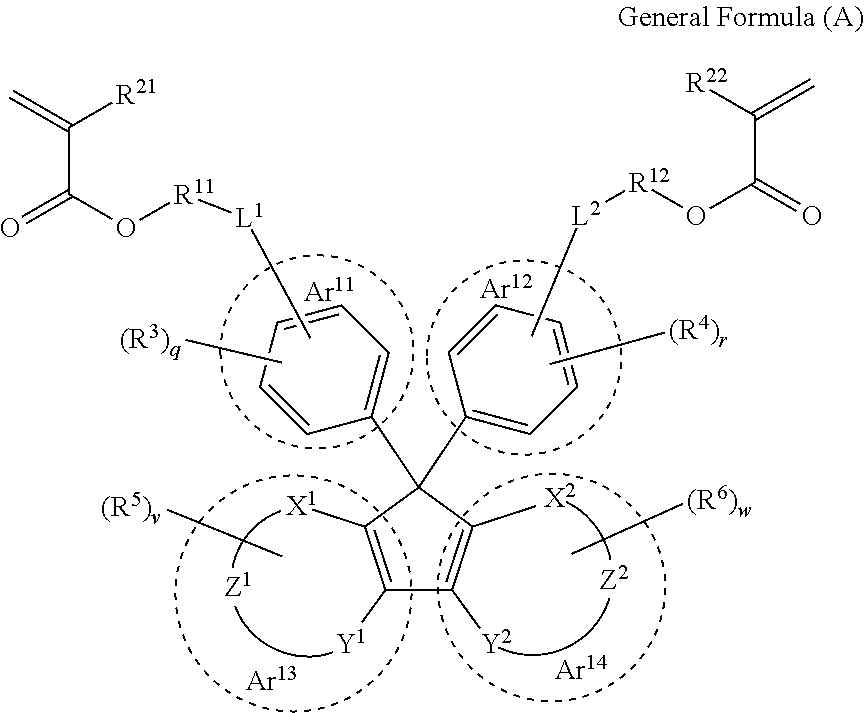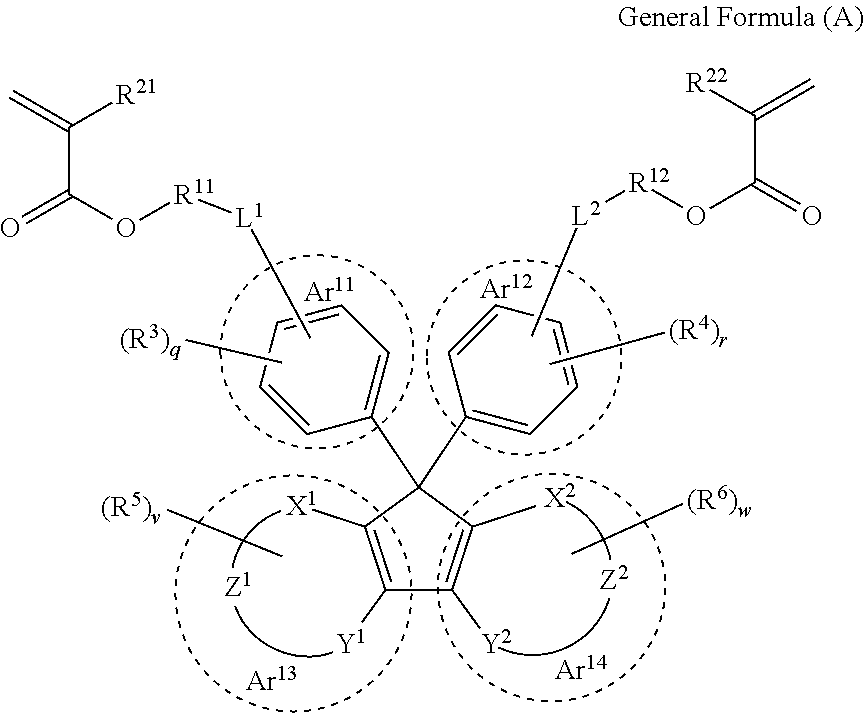Compound, curable composition, cured product, optical member, and lens
a composition and composition technology, applied in the field of compounds, can solve the problems of affecting the moldability of cured products, the quality of cured products to be obtained, and the inability of curable compositions to change moldability easily
- Summary
- Abstract
- Description
- Claims
- Application Information
AI Technical Summary
Benefits of technology
Problems solved by technology
Method used
Image
Examples
application examples
[0160]The optical member obtained from the cured product according to the embodiment of the present invention is especially preferable for a lens substrate. The lens substrate produced using the curable composition according to the embodiment of the present invention has a low Abbe number and preferably has high refractivity, high light transmittance and lightweightness and is excellent in optical properties. By suitably adjusting the type of monomer constituting the curable composition, it is possible to control the refractive index of the lens substrate in any desired manner.
[0161]In addition, in the present specification, the “lens substrate” refers to a single member capable of exhibiting a lens function. On and around the surface of the lens substrate, any film and member may be provided depending on the use environment and applications of lenses. For example, a protective film, an antireflection film, a hard coating film, or the like may be formed on the surface of the lens su...
examples
[0164]Hereinafter, the features of the present invention will be more specifically described with reference to Examples and Comparative Examples. In the following Examples, the materials to be used, amounts and ratios thereof, the details of the treatment and the treatment procedures, and the like may be suitably modified or changed without departing from the scope of the present invention. Accordingly, the scope of the present invention should not be limitedly interpreted by the following specific Examples.
synthesis example
[0165]
[0166]
[0167]An intermediate 1 was synthesized according to the description in paragraph 0073 of JP2017-036249A.
[0168]
[0169]
[0170]An intermediate 2 was synthesized according to the description in paragraph 0126 of WO2016 / 7-140245A.
[0171]
[0172]
[0173]An intermediate 3 was synthesized according to the description in paragraph 0132 of WO2017 / 115649A.
[0174]
[0175]
[0176]An intermediate 4 was synthesized according to the description in paragraph 0133 of WO2017 / 115649A.
[0177]
[0178]
[0179]An intermediate 5 was synthesized according to the description in paragraph 0135 of WO2017 / 115649A.
[0180]
[0181]
[0182]40 g of hydroxypropyl acrylate, 300 mL of dichloromethane, 3.8 g of N,N-dimethylaminopyridine, 33.8 g of succinic anhydride, and 200 mg of 2,6-di-t-butyl-4-methylphenol were mixed, and the internal temperature of the mixture was heated to 40° C. After stirring for 12 hours, the mixture was cooled to room temperature, 300 mL of water was added, and the mixture was stirred for 1 hour, follow...
PUM
| Property | Measurement | Unit |
|---|---|---|
| viscosity | aaaaa | aaaaa |
| frequency | aaaaa | aaaaa |
| saturated water absorption | aaaaa | aaaaa |
Abstract
Description
Claims
Application Information
 Login to View More
Login to View More - R&D
- Intellectual Property
- Life Sciences
- Materials
- Tech Scout
- Unparalleled Data Quality
- Higher Quality Content
- 60% Fewer Hallucinations
Browse by: Latest US Patents, China's latest patents, Technical Efficacy Thesaurus, Application Domain, Technology Topic, Popular Technical Reports.
© 2025 PatSnap. All rights reserved.Legal|Privacy policy|Modern Slavery Act Transparency Statement|Sitemap|About US| Contact US: help@patsnap.com



